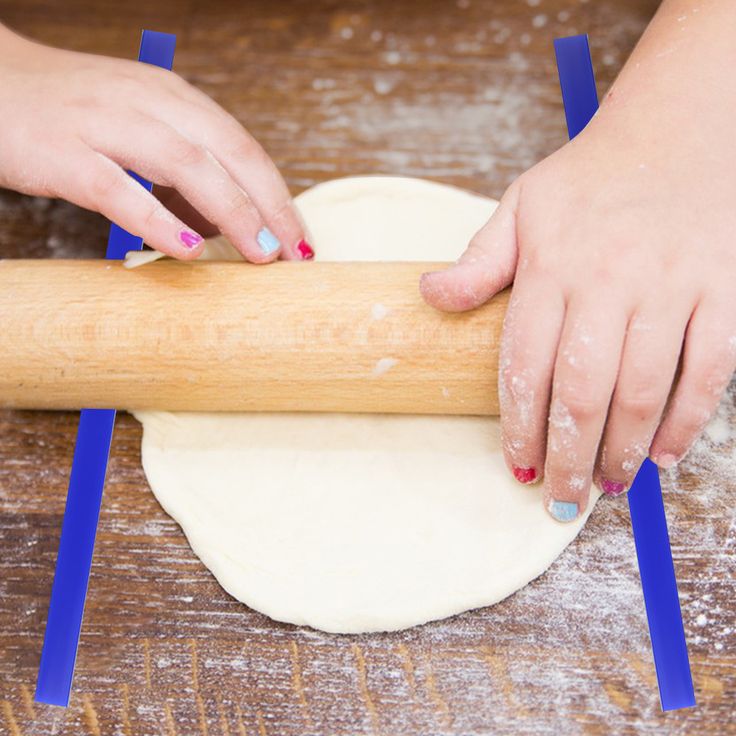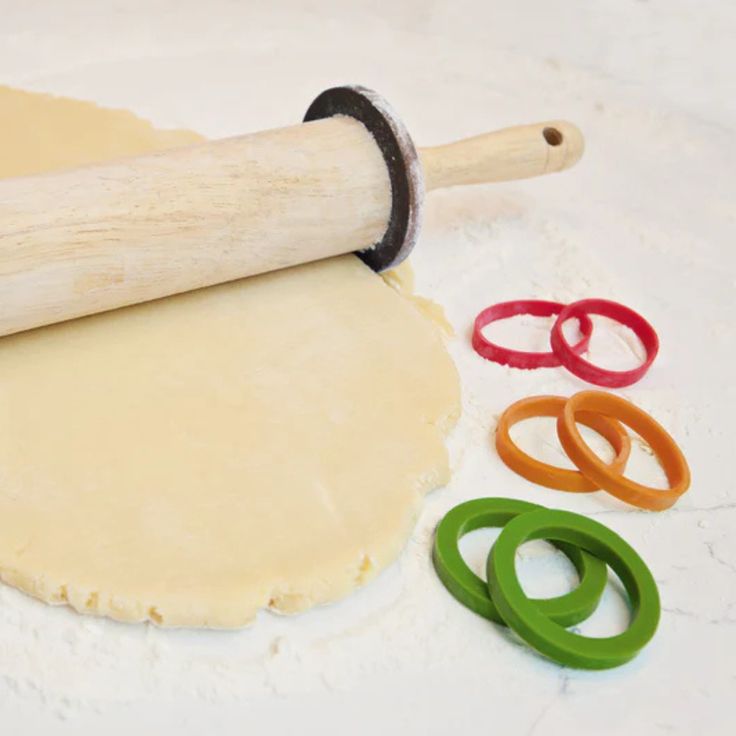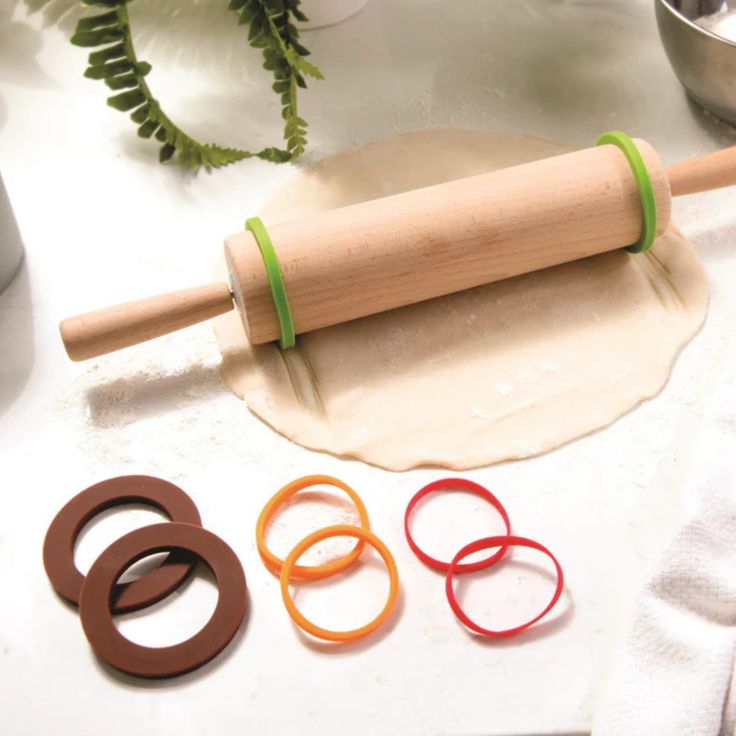Baking requires precision, whether you’re crafting a delicate pastry or a hearty loaf of bread. One of the most significant challenges faced by both amateur and seasoned bakers is achieving that perfect, even thickness in dough. Enter rolling pin guides—an innovative tool designed to simplify the baking process while ensuring consistent results. This article delves into the myriad benefits of using rolling pin guides, how they work, the various types available, and why they are essential for anyone serious about baking.

Understanding the Challenges of Even Dough Thickness
Even thickness remains a crucial aspect of successful baking. Dough that rolls unevenly often leads to significant problems during cooking. For instance, thicker areas may remain doughy, while thinner sections could burn. This inconsistency affects not only the texture but also the flavor of your final product. Bakers commonly struggle with achieving uniform thickness when rolling dough by hand, relying on their experience and instincts.
Many factors contribute to uneven thickness. Dough temperature can impact its pliability, making it harder to roll evenly if the dough is too cold or too warm. Additionally, varying pressure applied while rolling can lead to inconsistent results. Furthermore, using non-adapted surfaces can cause the dough to stick or become irregularly shaped. As a result, bakers often feel frustrated by the unpredictable nature of this process. To overcome these challenges, many opt for rolling pin guides.
What Are Rolling Pin Guides and How Do They Work?
Rolling pin guides are simple yet effective tools designed to help bakers achieve uniform dough thickness. Typically, these guides come in the form of rings or bands that fit securely on either end of a rolling pin. They raise the rolling pin to a specific height, providing measuring standards for dough thickness during the rolling process.
To use rolling pin rings, you simply attach them to the ends of your rolling pin, choosing the desired thickness you want to achieve based on the recipe requirements. As you roll the dough, these guides maintain a consistent height, ensuring uniform pressure across the entire surface. This simplicity allows bakers to enjoy a hassle-free experience while providing accurate and consistent results.
Available in various thicknesses, rolling pin guides cater to everything from pie crusts to cookie dough. Many bakers appreciate the convenience and reliability they introduce to the process, rendering guesswork obsolete. Additionally, certain models come with adjustable features, allowing customization for different dough types and recipes. By utilizing rolling pin guides, you set yourself up for baking success.

The Benefits of Using Rolling Pin Rings
Implementing rolling pin guides in your baking routine brings numerous advantages. One major benefit is the elevation of precision in your work. Accurate dough thickness leads to consistent baking times, ensuring every piece of dough cooks evenly. As a result, you produce delicious baked goods that showcase your efforts without the complications of uneven baking.
Moreover, rolling pin guides enhance your overall baking confidence. Knowing that you can rely on a tool designed for this specific task reduces anxiety and bolsters creativity. You can experiment with various dough types—whether it involves rich pastry dough for tarts or sturdy bread dough—without worrying about consistency. As you become more comfortable with your baking skills, you’ll feel compelled to try new recipes and techniques.
Another key advantage of rolling pin rings is the time they can save during the baking process. Achieving even thickness typically involves measuring and adjusting multiple times, a process that can become tedious and time-consuming. With these guides, you attain the desired thickness with minimal effort and fewer adjustments. This efficiency allows you to prepare more baked goods in less time, leading to a satisfying and productive kitchen environment.
Types of Rolling Pin Rings: Choosing the Best for Your Needs
Bakers come across various rolling pin guides tailored for different baking tasks. Understanding these types helps you select the ideal one for your kitchen.
- Adjustable Thickness Rings: These guides feature several rings that you can switch for desired thickness levels. Adjustable models allow for versatility when working with different dough types. They cater to various recipes, ensuring you achieve precise thickness consistently.
- Silicone Rolling Pin Rings: Made of flexible silicone, these rings often offer non-stick properties, making them perfect for delicate dough. The lightweight, flexible nature makes them easy to use, and they easily slide onto your rolling pin.
- Magnetic Rolling Pin Guides: Ideal for metal rolling pins, some models use magnets to keep the guides in place. These magnetic options allow for a smoother rolling experience while maintaining the desired thickness.
- Measurement Bands with Fixed Thickness: Simple bands designed to fit specific rolling pin sizes provide easy-to-use solutions for common thicknesses. While less versatile than adjustable options, they always ensure consistent results.
Your selection depends on your baking style and preferences; assess your typical recipes to determine which type will best fulfill your needs. By familiarizing yourself with the options, you can maximize the effectiveness of rolling pin guides in your kitchen.

Integrating Rolling Pin Guides into Your Baking Routine
Integrating rolling pin guides into your baking routine can significantly improve your process. Begin by selecting the appropriate guide based on your preferences and the type of dough you plan to work with.
When you start rolling, ensure your surface is clean and lightly floured to avoid sticking. Place the prepared dough on the surface and secure the rolling pin rings at the desired thickness. As you begin to roll, keep steady pressure on the rolling pin, allowing the guides to do their job.
Incorporate rolling pin guides across various recipes to familiarize yourself with their effectiveness. Whether you’re making cookies, pizza dough, or pasta, consistently using a guide reinforces the habit of maintaining even thickness. As you continue to work with these tools, you’ll undoubtedly notice improvements in your output, along with greater enjoyment in your baking journey.
Cleaning and Maintaining Your Rolling Pin Rings
To ensure the longevity and performance of your rolling pin rings, establish a consistent cleaning routine. Most rolling pin guides made from silicone or plastic can be easily cleaned by hand or in the dishwasher. Ensure you follow the manufacturer’s guidelines for any specific cleaning instructions for your model.
For wooden or metal rolling pin rings, opt for gentle hand washing with warm soapy water. Avoid soaking the guides, as prolonged exposure to water can lead to warping or splitting. Once cleaned, dry them immediately with a soft cloth to prevent moisture build-up.
Regular maintenance extends the life of your guides and preserves their effectiveness. Examine the guides periodically for any signs of wear, such as cracks or warping. If you encounter any issues, consider replacing the affected guides to maintain high-quality performance in your baking.
An adequately maintained rolling pin guide simplifies your baking experience while ensuring delicious, uniformly-thick products time and again.

Pairing Rolling Pin Guides with Other Baking Tools
Seamless integration of rolling pin guides with other essential baking tools enhances your overall cooking experience. Invest in quality tools that complement your rolling pin guides and support your baking needs.
- Cling Film and Parchment Paper: Utilizing these items can help your dough remain manageable. Placing the dough between two sheets of parchment paper limits sticking while rolling, allowing for even thickness without additional flour.
- Bench Scrapers: Incorporating a bench scraper for managing rolled-out dough will maintain the integrity of your creations. It also helps you lift and transfer dough once rolled, ensuring you don’t lose the perfect thickness.
- Quality Rolling Pins: Pair rolling pin rings with the right rolling pin for best results. Wooden, marble, or stainless steel rolling pins can pair effectively with guides, enhancing your control while rolling.
- Silicone Baking Mats: Using a silicone mat as a surface for rolling out dough offers stick resistance and eases the rolling process. These mats often require minimal cleanup afterward, allowing for smooth transitions between recipes.
By investing in the right combination of tools, you can elevate your baking experience. The synergy between tools allows you to create beautiful, consistent results in your kitchen.

Conclusion: Elevate Your Baking with Rolling Pin Guides
Rolling pin guides serve as an invaluable ally for bakers seeking to achieve perfect, even thickness in their dough. By eliminating the guesswork and promoting consistency, these practical tools transform the baking experience. As you incorporate rolling pin rings into your routine, you’ll experience increased confidence, efficiency, and joy in your culinary endeavors.
Understanding the different types of guides, their benefits, and how to choose the best one for your kitchen empowers you to take control of your baking journey. Maintain your guides diligently and incorporate them with other essential tools to enhance your overall baking potential.
Ultimately, rolling pin guides don’t just improve your technique; they inspire creativity and open doors to new culinary adventures. Whether you’re a novice baker or a seasoned pro, incorporating rolling pin rings into your toolkit will undoubtedly elevate your baking game, delivering delicious results each time you step into the kitchen.

